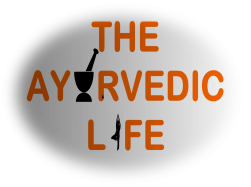 Parathas are a traditional type of Indian flatbread, made from whole wheat. They are similar to rotis/chapatis/phulkas, with the key difference being in the technique used to roll out the bread.
Parathas are a traditional type of Indian flatbread, made from whole wheat. They are similar to rotis/chapatis/phulkas, with the key difference being in the technique used to roll out the bread.
Ingredients: (make 8-10 parathas)
- 2 cups of whole wheat flour (there are many brands available – I like the Aashirwaad brand after trying out the others in the market)
- Water (1 cup approximately – may vary depending on the flour used)
- Salt (to taste – 1 tsp approximately)
- Oil (1 tsp)
Method:
- Add the flour to a wide plate or bowl with salt.
- Start adding the water little by little at a time, and keep mixing the dough with your hands so that the flour and water mix well. Make sure that you keep homogenizing the flour little by little at a time while adding the water. Move on to the drier parts of the flour until all the flour has come into contact with water. Ensure that the dough is neither too firm nor too soggy at this point.
- Now try to bring in all the dough together and adjust the consistency, adding more flour (if too wet and sticky) or more water (if too dry and firm), as necessary.
- Once the flour has all come together like a ball, add the oil.
- Keep kneading the flour well, beating it and throwing it around in the bowl/plate, till it becomes soft and pliable.
- Let the dough sit for a half hour or so, covered in a vessel, so that no air comes in contact with it (exposure to air will dry it out).
- Make balls of whatever size (I make mine approximately 1.5 – 2 inches in diameter) rotis you want to make, just before rolling out the dough. Up till this step, the directions are similar to those followed for making rotis/chapatis.
- Flatten the ball and keep a box/plate of wheat flour handy to dust the dough while rolling out the chapathi.
- When the rolled dough reaches a diameter of approximately 2.5 inches, stop rolling further. Apply a thin layer of oil on the dough.
- Sprinkle some wheat flour on the oil and spread it (doesn’t have to be even) around the dough, so that the oil layer is somewhat covered with the wheat flour dust.
- Now, carefully fold the edges inward and seal to form a ball of sorts.
- Work with a rolling pin to flatten the dough, ensuring that you maintain an even thickness throughout the bread. Keep dusting with flour as the dough starts sticking to the surface. Keep removing the dough from the surface and turn it over often and dust with flour, while rolling out, so that it does not end up sticking to the surface. A common rookie mistake is to make only the corners thin, while the center is inadvertently left thick. Ensure that you roll outward, starting from the center, so that all parts of the paratha are even in thickness.
- Heat a tava/griddle on medium to high heat. Place the rolled out bread on the tava, when it is warm, but make sure that the griddle is not over heated. Wait for bubble-like elevations (these will be bigger than the ones that appear while making chapatis) to appear (15-20 seconds).
- Flip the paratha over and let it remain for a similar amount of time. If your paratha was rolled out fairly evenly, you may see the paratha completely fill up with air now. This is good because it ensures even cooking of the insides as well.
- Drizzle ghee on both sides and wait till a golden brown hue is reached.
- Your yummy paratha is now ready!
Tastes (Rasa):
Sweet (wheat flour, ghee, oil), salt (salt).
Doshic Influence:
Grains are kapha increasing in general. They are nourishing and help in building tissues, increasing energy etc. (kapha qualities). The addition of ghee increases the kapha qualities even more, but ghee is tridoshic in general and is good for pittas and vatas pacification, in general. For kapha types, the quantity of ghee used can be reduced. But ghee has other benefits – it improves digestion, enhances memory and intellect and nourishes the body and mind. Wheat, with its sticky and heavy nature tends to be kapha aggravating. Since it is hard to digest, wheat can pose some problems for vatas, but the addition of ghee is good to alleviate this problem and also makes the parathas more oily/unctuous, which combats vata’s dry nature. A balanced pitta’s digestive fire should be able to handle the wheat well. Also, the heavy, cold qualities of wheat help in balancing pitta’s light and hot qualities. Addition of ghee is very good for pittas.
Effects on the Mind (Gunas – Qualities):
In general, this is a sattvic food, if made and eaten fresh. If you make the dough, refrigerate it and use it the next day, the tamasic qualities start to increase. The same holds for parathas that are made ahead, refrigerated and reheated the next day for use. Sometimes, these are unavoidable due to our fast-paced lives and using these techniques once in a while to save on time and reduce stress is not just okay, it is smart even. So, don’t stress if every once in a while, you do use leftovers. Just keeping these points in mind and keeping these practices to a minimum will help.






